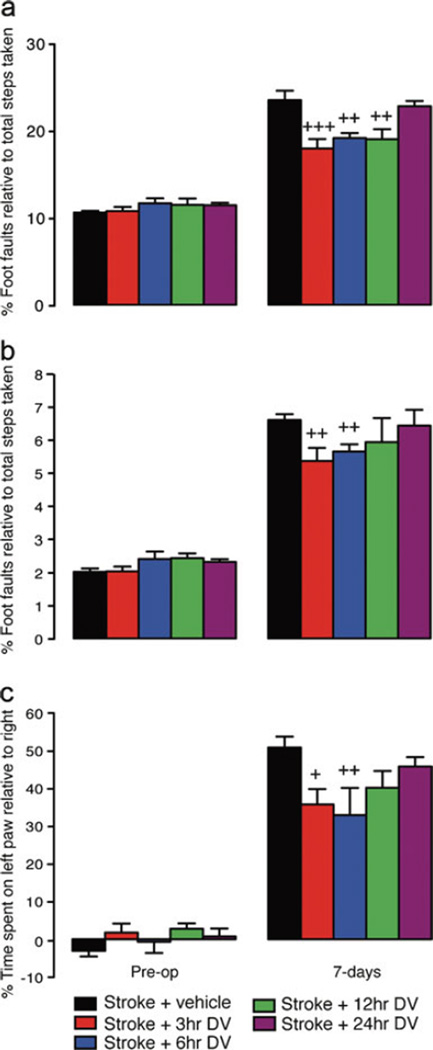Fig. 3.
Behavioral recovery after stroke in young. Behavioral recovery in young animals following photothrombosis stroke was assessed on grid-walking (panels a and b) and cylinder/forelimb asymmetry (panel c) tasks. Analysis of forelimb (a) and hindlimb (b) foot faults revealed a significant increase in the number of foot faults compared with baseline measurements 1 week post-stroke. Daily IP administration of DV (2 mg/kg) resulted in a significant decrease in the number of forelimb footfaults made when DV was given from 3, 6, or 12 h post-stroke and a significant decrease in the number of hindlimb footfaults made when DV was administered 3 or 6 h post-stroke. Assessment of forelimb asymmetry using the cylinder task (c) showed that the mice had a greater tendency to spend more time on their left forepaw post-stroke when pressing against the cylinder wall as revealed by an increase in the left/right ratio after stroke. Daily IP administration of DV (2 mg/kg) resulted in a significant improvement in the use of the impaired right forelimb when DV was given from 3 or 6 h post-stroke. An n=7 per group were used for these studies. +=P<0.05, ++=P<0.01 compared with stroke+vehicle-treated controls

